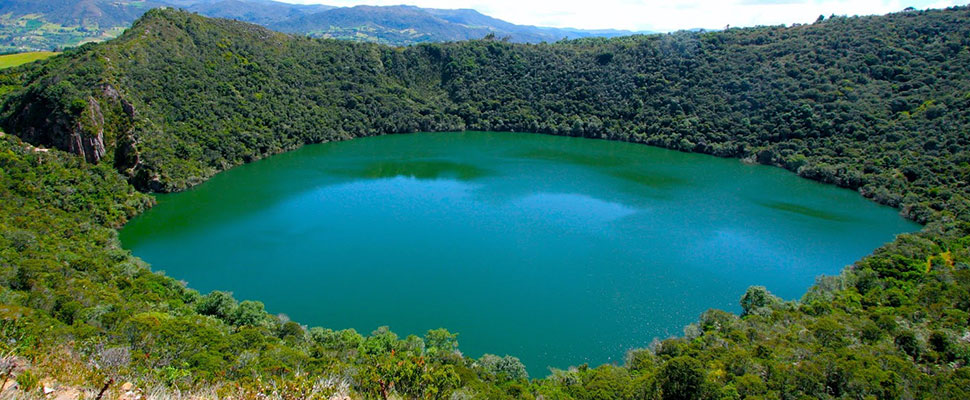The wonders of Guatavita

A Colombian town filled with incredible myths and legends

Guatavita is a small town about 75km from Bogotá characterized by colonial whitewash buildings and its stalls filled to the brim with arts and crafts. It is the perfect place to let go of all the stress of the big city.
The place was built when the original colonial town of Guatavita was submerged in the nearby reservoir. Today, when the water level is low, it’s possible to see the peak of the old church jutting out of the lake.
Guatavita, which in the Muisca language means “top of the mountain”, is also the name of a lagoon located near by.
At said lagoon, the Muisca Cacique, the leader of the tribe, would cover himself in gold shavings, sail out IGNORE INTO middle of the pond and rinse himself off. His assistants, meanwhile, would throw handmade goldwork as an offering for Chie, the goddess of water.
This led to the birth of the legend of El Dorado, which means “the golden one” in Spanish, and it refers to the gold covered cacique.
There have been numerous efforts to drain the bayou in the hopes to find the gold treasures submerged below. Most of the unique artifacts found made their way to Spain. However, some examples are currently on display in the Bogotá Gold Museum.
Another interesting attraction in Guatavita is the lover’s Bridge, a lovely, wooden arch built across a dry river. The legend has it that every couple who crosses while holding hands and stops in the middle to kiss, will never separate.
Other popular attractions in the area include museums dedicated to religion and indigenous culture, the historic Nuestra Señora de los Dolores, and an indigenous cemetery.
A trip to Guatativa is a charming experience that involves engaging in nautical sports on the reservoir, bird watching and ecological hikes on paths near the lake, and a stroll through the new town where history is guarded side by side with the work of contemporary artisans who are true masters of clay and virgin wool.
LatinAmerican Post | Luisa Fernanda Báez Toro
Copy edited by Susana Cicchetto






